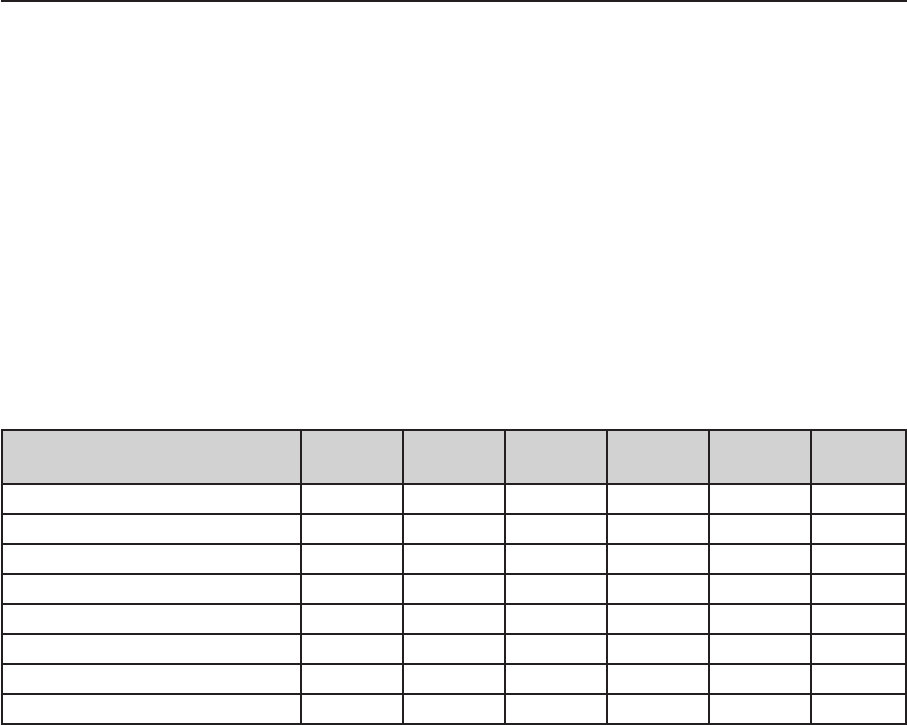
14
15
P3000RL Normal Mode U
Mains
[V] I
Mains
[A] P
Mains
[W]
P
out
[W] P
d
[W] BTU/hr
(3)
Idling 230V 1.0 152 - 152 519
Max. Output @ 8Ω
(1)
230V 13.8 2560 2 x 850 860 2934
Max. Output @ 4Ω
(1)
230V 22.4 4330 2 x 1300 1730 5903
max. Output @ 4Ω
(1)
230V 13.9 2575 2 x 433 1709 5831
max. Output @ 4Ω
(2)
230V 7.8 1350 2 x 163 1024 3494
Normal Operation (-10dB) @ 4Ω
(1)
230V 8.0 1420 2 x 120 1180 4026
Nominal Operation (0dB) @ 4Ω
(1)
230V 21.6 4170 2 x 1200 1770 6040
Alarm Operation (-3dB) @ 4Ω
(1)
230V 16.0 3020 2 x 610 1800 6142
For approximation; when operating the appliance at 120V mains the stated current values need to be
doubled.
(1) modulated with sine signal
(2) modulated with VDE-noise
(3) 1BTU = 1055.06J = 1055.06Ws
MAINS OPERATION
The following tables allow determining power supply and cabling requirements. The values of the
column „Max. Output @ 4Ω” are relevant for “normal” operation. These values are based on operating
the power amplier with VDE-noise at 1/8 of the maximum output power, which approximately equates
the load of the power amplier being operated with a music signal at maximum volume possible,
without noticeable clipping.
RESULTING TEMPERATURE INSIDE THE POWER AMPLIFIER
The power drawn from the mains network is converted into acoustic output power to feed the
connected loudspeaker systems & heat. The difference between drawn power and dispensed power
is called leakage power or dissipation (Pd). The amount of heat resulting from power dissipation might
remain inside of a rack-shelf and needs to be diverted using appropriate measures. The following
table provides auxiliary means for calculating the temperatures inside of a rack-shelf system/cabinet
and the ventilation efforts necessary.
The column “Pd” lists the leakage power in relation to different operational states. The column “BTU/hr”
lists the dispensed heat amount per hour.
MAINS OPERATION & RESULTING TEMPERATURE


















